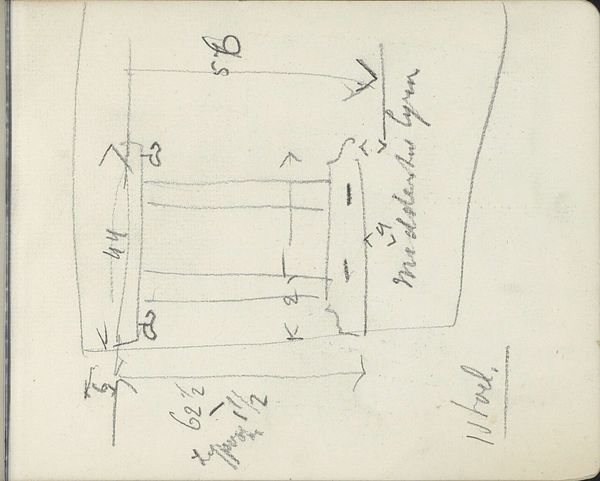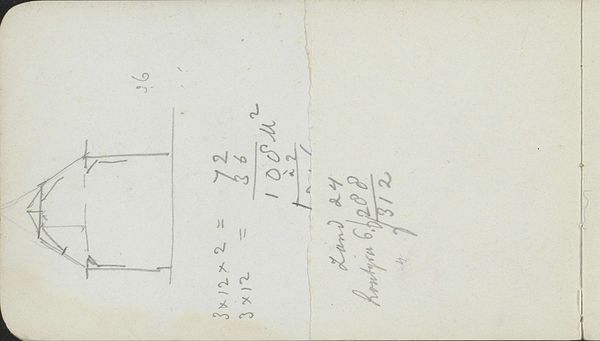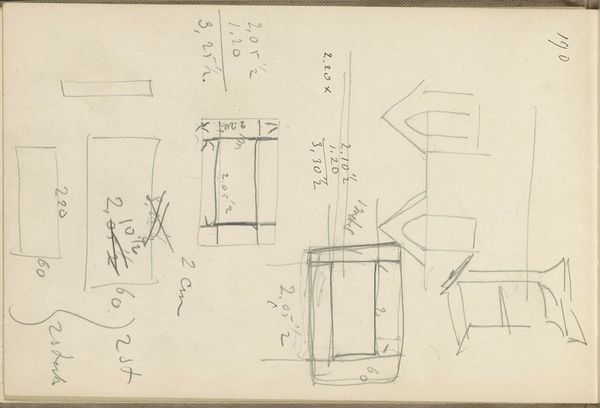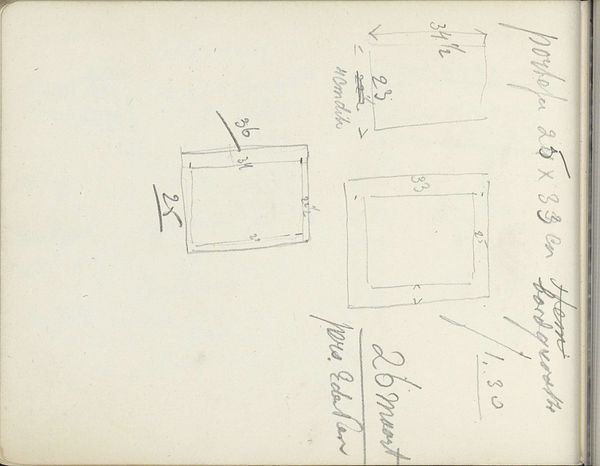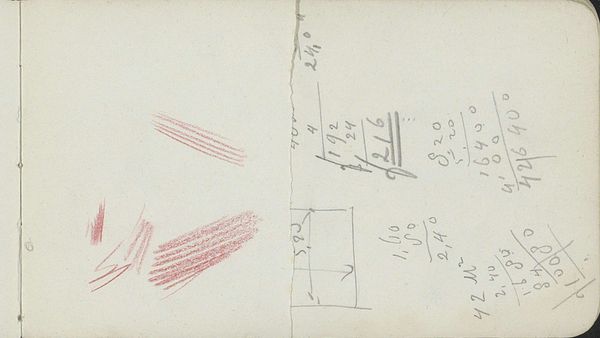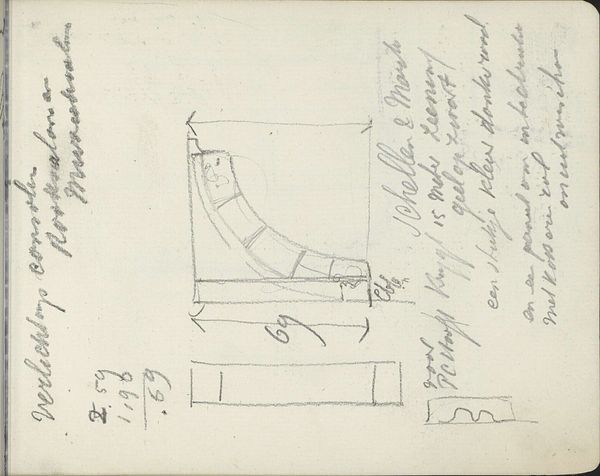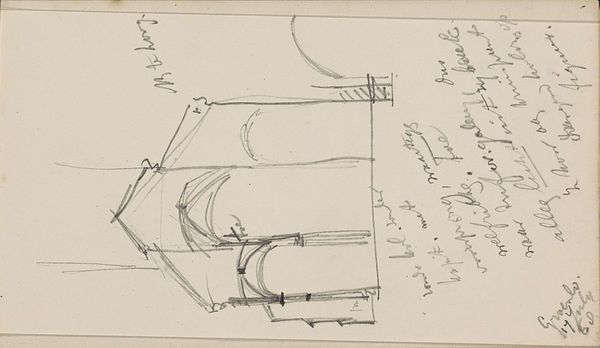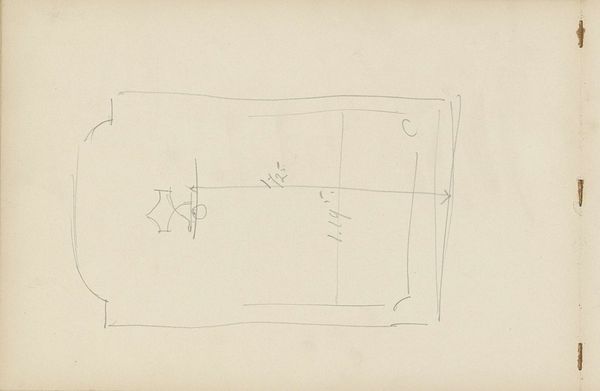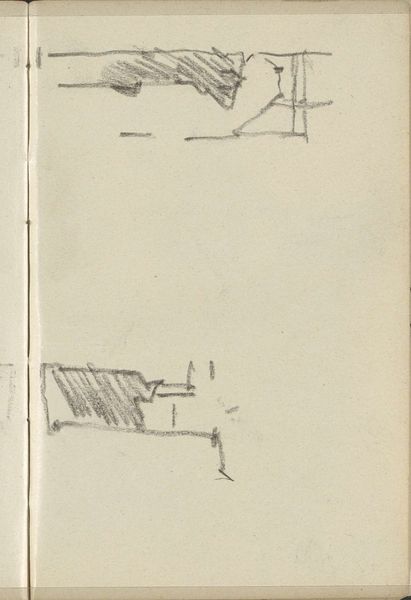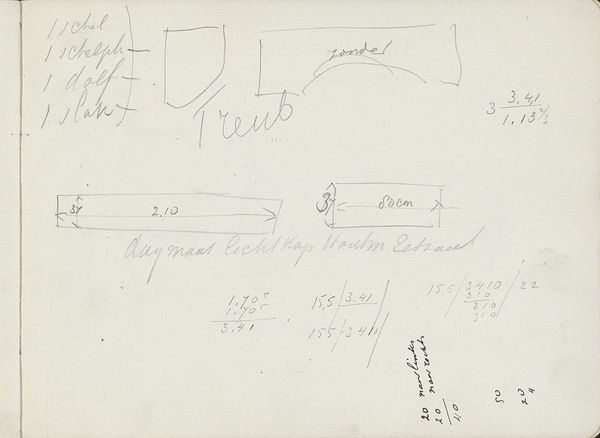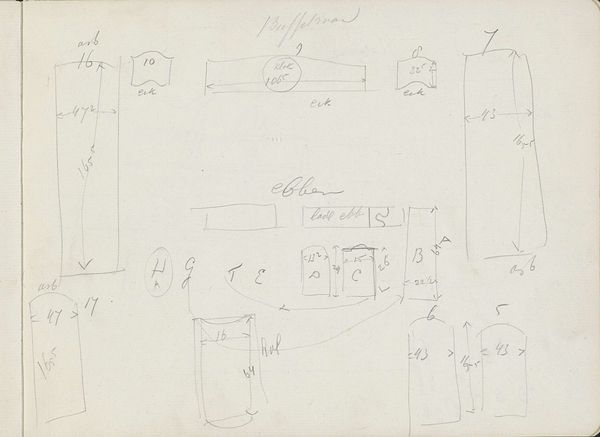
drawing, pencil
#
drawing
#
quirky sketch
#
hand drawn type
#
personal sketchbook
#
idea generation sketch
#
sketchwork
#
ink drawing experimentation
#
geometric
#
pen-ink sketch
#
pencil
#
ink colored
#
abstraction
#
sketchbook drawing
#
sketchbook art
Copyright: Rijks Museum: Open Domain
Curator: Here we have "Rechthoek," a drawing created by Carel Adolph Lion Cachet between 1905 and 1906, currently held here at the Rijksmuseum. It’s rendered in pencil and ink, and it appears to be a page from a sketchbook. Editor: It’s a bit…technical, isn't it? It looks like an architect's quick study, or maybe notes on a stage design. It definitely doesn't feel like the artist was aiming for a grand statement. More like capturing a passing thought, quickly jotted down before it disappears. Curator: Precisely! Cachet was deeply involved in decorative arts and design reform at the time. This drawing shows us how he worked through the underlying structure. It highlights the intersections between fine art and practical design elements and shows an intimate part of his creative process. The use of simple materials and geometric form reflects the influence of the era's emphasis on functionalism. Editor: Functionalism, you say. For me, the crossed-out numbers bring an immediate sense of urgency. This isn’t just a placid sketch; there’s problem-solving going on. The simple act of him calculating something right there on the paper tells a deeper story of how design and function come to be in an immediate, evolving creative act. Curator: The numerical annotations definitely enhance our insight. He may have intended to build or design something specific around this rectangle. Viewing it through a lens of architectural history highlights how practical calculations intertwined with artistic visions. Editor: Exactly. And in some ways, those imperfections are what make it so compelling. It's vulnerable, honest. More appealing to me than a perfectly rendered object. And honestly, maybe even more informative as to what goes into constructing anything whether practical or aesthetic! It sparks ideas – maybe the best art always does. Curator: A fitting reminder that behind every finished piece, every designed object, there's a process of experimentation and adaptation. Cachet invites us to witness this creative problem-solving in action, reflecting the artistic mindset of an era that championed both beauty and utility. Editor: So next time I’m lost for inspiration, I’m just going to start scribbling down flawed ideas and numbers and hope I get somewhere near as conceptually intriguing.
Comments
No comments
Be the first to comment and join the conversation on the ultimate creative platform.
